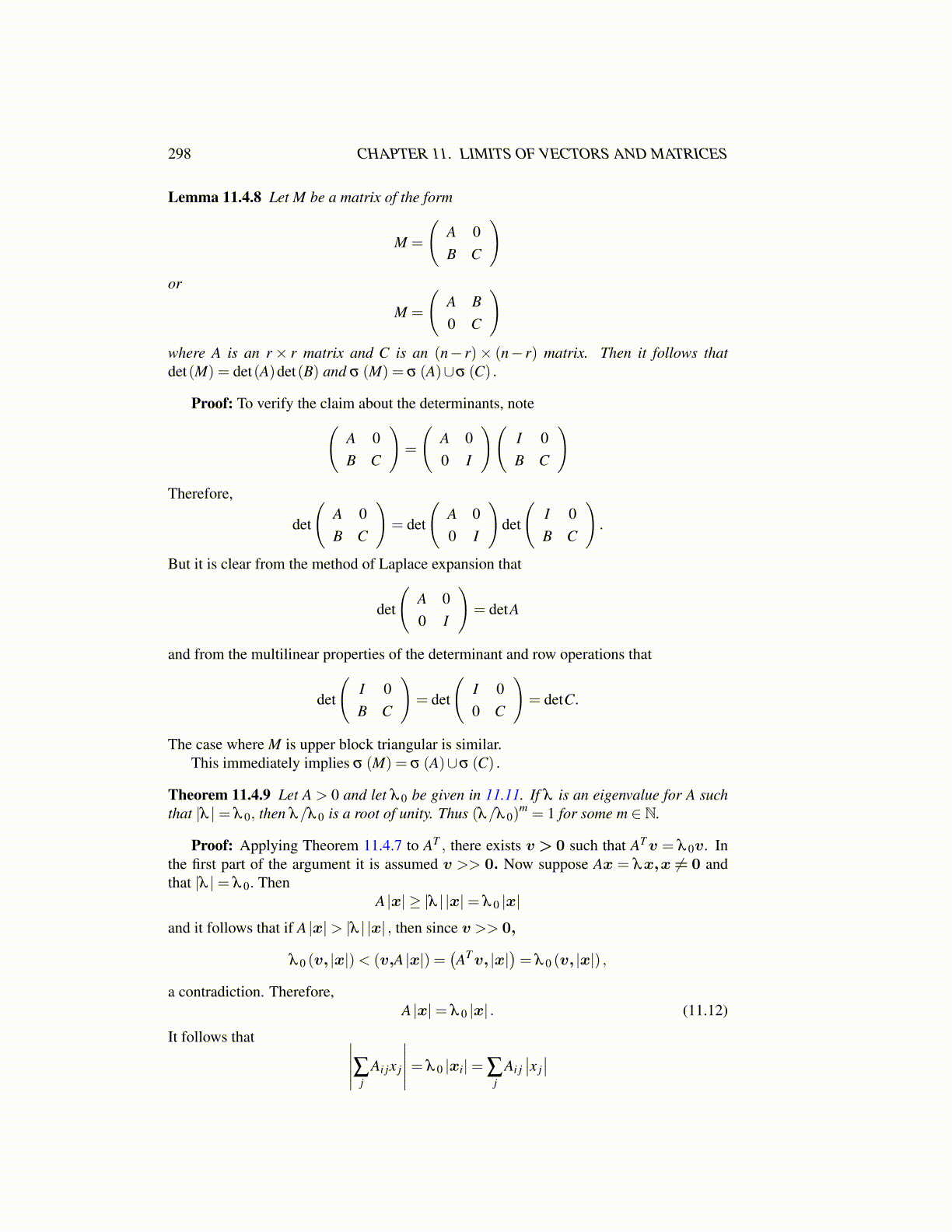
298 CHAPTER 11. LIMITS OF VECTORS AND MATRICES
Lemma 11.4.8 Let M be a matrix of the form
M =
(A 0B C
)or
M =
(A B0 C
)where A is an r× r matrix and C is an (n− r)× (n− r) matrix. Then it follows thatdet(M) = det(A)det(B) and σ (M) = σ (A)∪σ (C) .
Proof: To verify the claim about the determinants, note(A 0B C
)=
(A 00 I
)(I 0B C
)Therefore,
det
(A 0B C
)= det
(A 00 I
)det
(I 0B C
).
But it is clear from the method of Laplace expansion that
det
(A 00 I
)= detA
and from the multilinear properties of the determinant and row operations that
det
(I 0B C
)= det
(I 00 C
)= detC.
The case where M is upper block triangular is similar.This immediately implies σ (M) = σ (A)∪σ (C) .
Theorem 11.4.9 Let A > 0 and let λ 0 be given in 11.11. If λ is an eigenvalue for A suchthat |λ |= λ 0, then λ/λ 0 is a root of unity. Thus (λ/λ 0)
m = 1 for some m ∈ N.
Proof: Applying Theorem 11.4.7 to AT , there exists v > 0 such that ATv = λ 0v. Inthe first part of the argument it is assumed v >> 0. Now suppose Ax = λx,x ̸= 0 andthat |λ |= λ 0. Then
A |x| ≥ |λ | |x|= λ 0 |x|
and it follows that if A |x|> |λ | |x| , then since v >> 0,
λ 0 (v, |x|)< (v,A |x|) =(ATv, |x|
)= λ 0 (v, |x|) ,
a contradiction. Therefore,A |x|= λ 0 |x| . (11.12)
It follows that ∣∣∣∣∣∑jAi jx j
∣∣∣∣∣= λ 0 |xi|= ∑j
Ai j∣∣x j∣∣